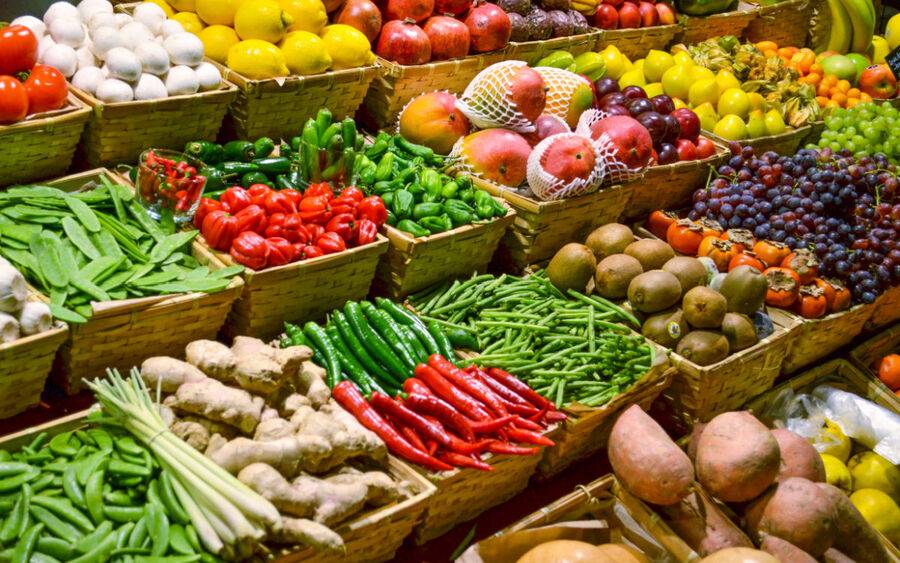What Are Recommended Servings of Fruits and Vegetables?
Eating right amount helps prevent chronic illnesses

Eating right amount helps prevent chronic illnesses
Eat your fruits and veggies and live longer. They’re words of dietary wisdom — and backed by studies. Fruits and vegetables are powerhouses of nutrition. Some are so full of nutrients that they are called superfoods.
Almost all types of fruits and vegetables — fresh, frozen, canned, dried and juiced — can help you meet your daily needs. Yet, most Americans don’t come close to filling their plates daily with enough fruits and vegetables. Only one in 10 adults eat the recommended amount, according to the Centers for Disease Control and Prevention.
This lack of fruits and vegetables in our diets may explain the rise in diet-related illnesses, such as obesity and diabetes, as well as the ongoing efforts to encourage Americans to eat more fruits and veggies.
“One of the best ways to build a healthy plate is by substituting low-calorie foods in place of high-calorie foods,” says Samantha Harris, MD, an endocrinologist with the Scripps Clinic Center for Weight Management. “Fruits and vegetables are low in fat and calories and are full of nutrients. They’re great sources of vitamins and minerals and fiber. Since they contain fiber and water, they can help fill you up, which helps with weight management.”
How much fruits and vegetables do we need?
Knowing how much fruit and vegetables to consume is important to help you maintain a balanced and healthy diet.
Servings are measured in cups or pieces. The U.S. Dietary Guidelines for Americans recommends adults eat at least 2 cups of fruit and 2 to 3 cups of vegetables each day. Aim for a variety of colors and types of produce to get the most nutrients. This “5 A Day” approach is part of a public health campaign that encourages people to consume at least five servings of fruits and vegetables each day.
The U.S. Department of Agriculture’s MyPlate program is another helpful guide for a balanced diet. MyPlate recommends filling half your plate with fruits and vegetables at each meal.
Several popular diets emphasize fruits and vegetables, including:
- The Mediterranean Diet focuses on fruits, vegetables, whole grains and lean proteins, promoting heart health.
- Plant-based diets emphasize fruits, vegetables, and legumes while reducing or eliminating animal products.
- Whole foods diets focus on natural, minimally processed foods, including some animal products, while avoiding added sugars and unhealthy fats.
Important source of hydration
Drinking water is the best way to stay hydrated. If plain water tastes boring to you, you can add flavor with fresh fruits or a splash of fruit juice.
Eating fruits and vegetables with high water content helps too, especially useful if you don’t drink enough water daily. Some good choices are cucumbers, tomatoes, watermelon, strawberries, peaches and oranges.
Why don’t we eat more fruits and vegetables?
Many reasons explain why Americans don’t eat enough fruits and vegetables.
Our fast-food culture makes it hard to consume the right amount of produce. Fresh fruits and vegetables can be expensive and take time to prepare home. Some people may not enjoy the taste or texture of some vegetables.
If cost is an issue, there are many ways to eat healthy without spending a lot. Buying fruits and vegetables that are in season can help save money. Remember to buy only what you can eat before it spoils.
Sticking to your shopping list at the store and choosing canned or frozen produce are also good ways to save. There are also many budget-friendly recipes that include fruits and vegetables.
You can also grow your own fruits and vegetables in your garden. This not only provides you with fresh produce but also lets you enjoy gardening.
You can add leafy greens to salads, smoothies or serve them as a side dish. You can roast, boil, or use root vegetables like onions and garlic in soups and stews. Berries can be eaten fresh, used in desserts or added to your morning cereal or yogurt.
Is juice healthy for you?
While drinking fruit or vegetable juice has many health benefits, it is not recommended for everyone, especially people with diabetes.
Many juice products are sugar-sweetened drinks. They have little juice content and are mostly water with added sugars. Too many added sugars can lead to weight gain and poor nutrition.
“As a general rule, eating whole fruit is healthier than drinking fruit juice or fruit smoothies,” says Dr. Harris.
Added sugars should make up no more than 10 percent of your daily calories, according to the Dietary Guidelines for Americans. Most American adults currently exceed that limit.
The healthiest type of juice is 100 percent juice or juice with little to no added sugars. But even 100 percent juice has limits.
“When you drink strained juice, you aren’t getting fiber, so it’s very easy to pile calories onto your diet,” says Dr. Harris.
At least half of your fruit intake should come from whole fruit, not just juice. There are many ways to cut your sugar intake. Skip sugary snacks and stay away from processed foods as much as possible.
Talk to your doctor if you have any questions about juicing for weight loss or how much fruits and vegetables should be in your diet. If you choose to boost your produce intake with juice, read the nutrition label on any product bought at the store. Check the serving size and calorie count and look for added sugar content.
For more information about Scripps Clinic Center for Weight Management call 858-794-1250.